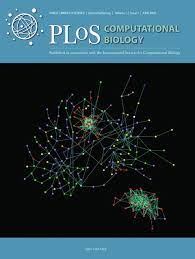

Journal TitleпјҡPlos Computational Biology
PLOS Computational Biology features works of exceptional significance that further our understanding of living systems at all scalesвҖ”from molecules and cells, to patient populations and ecosystemsвҖ”through the application of computational methods. Readers include life and computational scientists, who can take the important findings presented here to the next level of discovery.
Research articles must be declared as belonging to a relevant section. More information about the sections can be found in the submission guidelines.
Research articles should model aspects of biological systems, demonstrate both methodological and scientific novelty, and provide profound new biological insights.
Generally, reliability and significance of biological discovery through computation should be validated and enriched by experimental studies. Inclusion of experimental validation is not required for publication, but should be referenced where possible. Inclusion of experimental validation of a modest biological discovery through computation does not render a manuscript suitable for PLOS Computational Biology.
Research articles specifically designated as Methods papers should describe outstanding methods of exceptional importance that have been shown, or have the promise to provide new biological insights. The method must already be widely adopted, or have the promise of wide adoption by a broad community of users. Enhancements to existing published methods will only be considered if those enhancements bring exceptional new capabilities.
PLOS и®Ўз®—з”ҹзү©еӯҰзҡ„зү№иүІдҪңе“Ғе…·жңүйқһеҮЎзҡ„ж„Ҹд№үпјҢе®ғ们йҖҡиҝҮеә”з”Ёи®Ўз®—ж–№жі•пјҢиҝӣдёҖжӯҘеҠ ж·ұдәҶжҲ‘们еҜ№д»ҺеҲҶеӯҗе’Ңз»ҶиғһеҲ°жӮЈиҖ…зҫӨдҪ“е’Ңз”ҹжҖҒзі»з»ҹзҡ„еҗ„дёӘе°әеәҰзҡ„з”ҹе‘Ҫзі»з»ҹзҡ„зҗҶи§ЈгҖӮиҜ»иҖ…еҢ…жӢ¬з”ҹе‘Ҫе’Ң计算科еӯҰ家пјҢ他们еҸҜд»Ҙе°ҶжӯӨеӨ„д»Ӣз»Қзҡ„йҮҚиҰҒеҸ‘зҺ°жҸҗеҚҮеҲ°ж–°зҡ„еҸ‘зҺ°ж°ҙе№ігҖӮ
з ”з©¶ж–Үз« еҝ…йЎ»еЈ°жҳҺдёәеұһдәҺзӣёе…ійғЁеҲҶгҖӮжңүе…іиҝҷдәӣйғЁеҲҶзҡ„жӣҙеӨҡдҝЎжҒҜпјҢиҜ·еҸӮйҳ…жҸҗдәӨжҢҮеҚ—гҖӮ
з ”з©¶ж–Үз« еә”жЁЎжӢҹз”ҹзү©зі»з»ҹзҡ„еҗ„дёӘж–№йқўпјҢеұ•зӨәж–№жі•е’Ң科еӯҰзҡ„ж–°йў–жҖ§пјҢ并жҸҗдҫӣж·ұеҲ»зҡ„ж–°з”ҹзү©еӯҰи§Ғи§ЈгҖӮ
дёҖиҲ¬жқҘиҜҙпјҢйҖҡиҝҮи®Ўз®—еҸ‘зҺ°з”ҹзү©зҡ„еҸҜйқ жҖ§е’Ңж„Ҹд№үеә”иҜҘйҖҡиҝҮе®һйӘҢз ”з©¶жқҘйӘҢиҜҒе’Ңдё°еҜҢгҖӮеҸ‘иЎЁж—¶дёҚйңҖиҰҒеҢ…еҗ«е®һйӘҢйӘҢиҜҒпјҢдҪҶеә”е°ҪеҸҜиғҪеј•з”ЁгҖӮеҢ…еҗ«йҖҡиҝҮи®Ўз®—еҜ№йҖӮеәҰзҡ„з”ҹзү©еӯҰеҸ‘зҺ°иҝӣиЎҢе®һйӘҢйӘҢиҜҒзҡ„жүӢзЁҝ并дёҚйҖӮеҗҲ PLOS и®Ўз®—з”ҹзү©еӯҰгҖӮ
зү№еҲ«жҢҮе®ҡдёәж–№жі•и®әж–Үзҡ„з ”з©¶ж–Үз« еә”жҸҸиҝ°е·ІиҜҒжҳҺжҲ–жңүжңӣжҸҗдҫӣж–°зҡ„з”ҹзү©еӯҰи§Ғи§Јзҡ„е…·жңүзү№ж®ҠйҮҚиҰҒжҖ§зҡ„жқ°еҮәж–№жі•гҖӮиҜҘж–№жі•еҝ…йЎ»е·Із»Ҹиў«е№ҝжіӣйҮҮз”ЁпјҢжҲ–иҖ…жңүжңӣиў«е№ҝеӨ§з”ЁжҲ·зӨҫеҢәе№ҝжіӣйҮҮз”ЁгҖӮд»…еҪ“иҝҷдәӣеўһејәеҠҹиғҪеёҰжқҘйқһеҮЎзҡ„ж–°еҠҹиғҪж—¶пјҢжүҚдјҡиҖғиҷ‘еҜ№зҺ°жңүе·ІеҸ‘еёғж–№жі•зҡ„еўһејәгҖӮ
| еӨ§зұ»еӯҰ科 | е°Ҹзұ»еӯҰ科 | еҲҶеҢә | TopжңҹеҲҠ | з»јиҝ°жңҹеҲҠ |
| и®Ўз®—жңә科еӯҰ | MATHEMATICAL & COMPUTATIONAL BIOLOGY ж•°еӯҰдёҺи®Ўз®—з”ҹзү©еӯҰ BIOCHEMICAL RESEARCH METHODS з”ҹеҢ–з ”з©¶ж–№жі• | 2еҢә | жҳҜ | жҳҜ |
| еӨ§зұ»еӯҰ科 | е°Ҹзұ»еӯҰ科 | еҲҶеҢә |
| и®Ўз®—жңә科еӯҰ | MATHEMATICAL & COMPUTATIONAL BIOLOGY ж•°еӯҰдёҺи®Ўз®—з”ҹзү©еӯҰ BIOCHEMICAL RESEARCH METHODS з”ҹеҢ–з ”з©¶ж–№жі• | 2еҢә |
| жңҹеҲҠеҗҚз§° | йўҶеҹҹ | дёӯ科йҷўеҲҶеҢә | еҪұе“Қеӣ еӯҗ |
| Systematic And Applied Microbiology | з”ҹзү© | 2еҢә | 3.400 |
| Advances In The Study Of Behavior | з”ҹзү© | 2еҢә | 4.000 |
| Quarterly Review Of Biology | з”ҹзү© | 2еҢә | 6.500 |
| Quarterly Review Of Biology | з”ҹзү© | 2еҢә | 6.500 |
| Current Opinion In Plant Biology | з”ҹзү© | 2еҢә | 9.500 |
| Biochimica Et Biophysica Acta-bioenergetics | з”ҹзү© | 2еҢә | 4.300 |